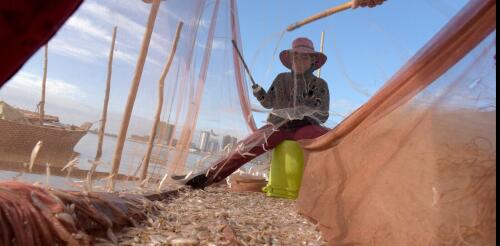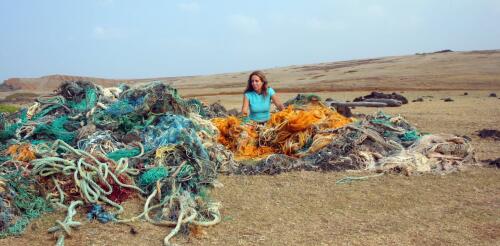Fish
Southeast Asia’s Mekong may be the most important river in the world. Known as the “mother of waters,” it is home to the world’s largest inland fishery, and the huge amounts of sediments it transports feed some of the planet’s most fertile farmlands. Tens of millions of people depend on it for their livelihoods. But how valuable is it in monetary terms? Is it possible to put a dollar value on the multitude of ecosystem services it provides, to help keep those services healthy into the future? That’s what my research colleagues and I are trying to figure out, focusing on two countries that hold the river’s most productive areas for fishing and farming: Cambodia and Vietnam. Understanding the value of a river is essential for good management and decision-making, such as where to develop infrastructure and where to protect nature. This is particularly true of the Mekong, which has come under enormous pressure in recent years from overfishi...
I am obsessed with plastic objects. I harvest them from the ocean for the stories they hold and to mitigate their ability to harm. Each object has the potential to be a message from the sea – a poem, a cipher, a metaphor, a warning. My work collecting and photographing ocean plastic and turning it into art began with an epiphany in 2005, on a far-flung beach at the southern tip of the Big Island of Hawaii. At the edge of a black lava beach pounded by surf, I encountered multitudes upon multitudes of plastic objects that the angry ocean was vomiting onto the rocky shore. I could see that somehow, impossibly, humans had permeated the ocean with plastic waste. Its alien presence was so enormous that it had reached this most isolated point of land in the immense Pacific Ocean. I felt I was witness to an unspeakable crime against nature, and needed to document it and bring back evidence. I began cleaning the beach, hauling away weathered and misshapen plastic debris ̵...
Mercury pollution is a global threat to human health, especially to unborn babies and young children. Exposure to methylmercury, a type that forms when mercury washes into lakes and streams, can harm children’s brain development and cause symptoms including speech impairment and muscle weakness in adults who consume seafood as their main food source. Methylmercury also threatens health and reproduction in fish and other wildlife. Humans, animals and birds are exposed to methylmercury when they eat fish and shellfish. Scientists have been working for decades to understand how and when fish accumulate mercury. This information is key for assessing mercury risks across different water bodies and landscapes, and for evaluating policy changes designed to reduce mercury emissions. For decades, scientists have used fish ear stones, known as otoliths, to gain insights into fish growth, migration, diet and the timing of their exposure to certain pollutants. These tiny structures of...
The global aquaculture industry has tripled in size since the year 2000, with producers raising a mind-boggling diversity of species, from seaweeds and clams to carp, salmon and cuttlefish. Many of these creatures are undomesticated and lead complex and highly social lives in the wild. The rapid growth in aquaculture means that billions of individual aquatic animals are now being farmed without basic information that could help ensure even minimal welfare standards. Our newly published study shows that these welfare risks are not uniform: Aquaculture is likely to have severe effects on welfare for some species, but negligible impacts on others. Whenever humans manage animals on a large scale, welfare becomes a concern. As experts on aquatic animals and their welfare, we believe that taking proactive measures to shape the aquaculture industry’s growth will be critical for its long-term success. A cuttlefish tackles a challenge originally designe...



